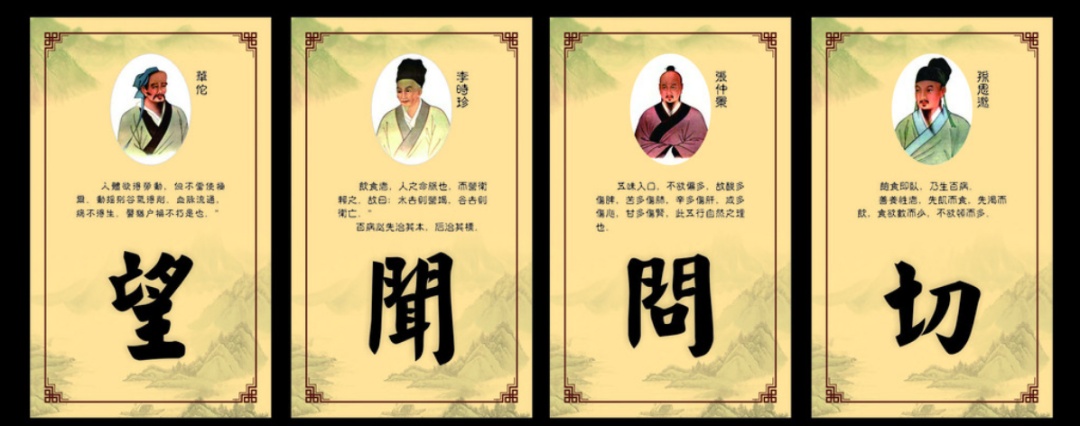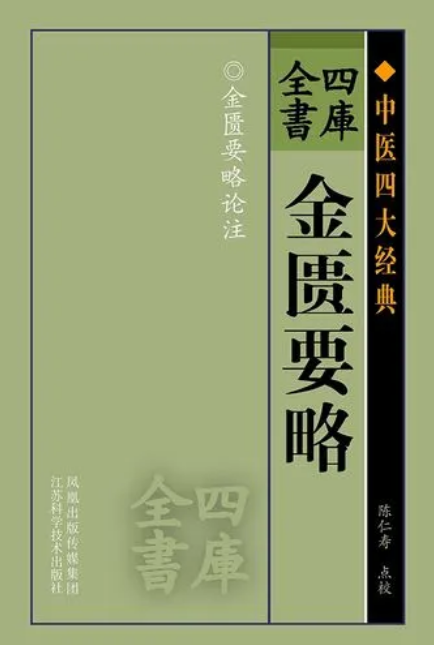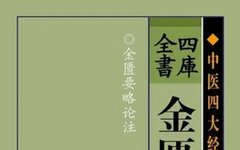
Section on Organs and Meridians II: The question is asked: When a disease is urgent, what does it mean to rescue the interior and the exterior? The master said: In cases of illness, if the treatment leads to continuous diarrhea with clear stools and body pain, one should urgently rescue the interior. If the body pain resolves and the stools regulate themselves, then one should urgently rescue the exterior.
In cases of exterior cold disease, if the physician mistakenly purges, causing the spleen yang to be depleted, leading to continuous diarrhea with clear stools and body pain, the exterior syndrome still exists. Both the interior and exterior are affected, but one should urgently rescue the interior first. After rescuing the interior, if body pain persists and the exterior syndrome is unresolved, and the stools regulate themselves, then one should urgently rescue the exterior.
1. When a disease is urgent, what does it mean to rescue the interior and the exterior? This refers to the mismanagement of a serious illness and the need to reverse it. If an exterior disease is mistakenly treated with purging, depleting the spleen yang, leading to continuous diarrhea with clear stools and body pain, the exterior disease remains unresolved. One loses the exterior and purges the interior, affecting both. Therefore, one should first rescue the interior, and if body pain resolves and the stools regulate themselves, then one can address the exterior.
2. The order of rescuing the interior before the exterior. Why rescue the interior first? This is crucial when there is continuous diarrhea with clear stools, indicating that the spleen yang is failing. One must urgently rescue the interior, restore yang, and after the stools regulate themselves, if body pain persists and the exterior cold is unresolved, then one can address the exterior cold.
This can be referenced and compared with the discussion on Tai Yang and Tai Yin.
Section on Organs and Meridians III: When a patient has both chronic and acute diseases, one should first treat the acute disease before addressing the chronic disease.
There is a sequence in treating new and old diseases; this is a fixed principle.
1. This refers to whether to first address the new disease or the chronic illness. One should first treat the acute disease and then the chronic illness.
Section on Organs and Meridians IV: The question is asked: The classics say, “Jue Yang acts alone,” what does this mean? The master said: This refers to having yang without yin, hence it is called Jue Yang.
Yang rises, and if there is yin to absorb it, it can ascend and descend. If there is yang without yin, then yang rises without descending, acting alone above, hence it is called Jue Yang.
1. Jue refers to the middle being empty and not functioning, yin and yang not connecting properly. If they do not connect, it becomes reversed. When yin and yang intersect, there is no Jue; yang rises and yin descends. If yin and yang do not connect, yang rises without descending, acting alone above, hence it is called Jue Yang.
The essence of yin and yang is that yin is balanced and yang is hidden. If yin is depleted below, then yang floats above, which is called Jue Yang acting alone.
Discussion: Refer to page 73 of the “Inner Canon” regarding Jue; the cold and heat of Jue, where Jue heat is indeed Jue Yang. When the yin qi is depleted below, yang becomes excessive and generates heat, hence it is called heat Jue, where yang does not engage with yin. Heat Jue occurs due to the depletion of essence qi and excessive alcohol consumption. (When yin is depleted and yang floats, it is called Jue Yang.)

Section on Organs and Meridians V: The question is asked: What are the eighteen yang diseases? The master said: Headache, pain in the neck, waist, spine, arms, and legs. What are the eighteen yin diseases? The master said: Cough, shortness of breath, wheezing, throat pain, abdominal rumbling and fullness, and chest pain. Each of the five organs has eighteen diseases, totaling ninety diseases. There are also six subtle conditions, each with eighteen diseases, totaling one hundred and eight diseases. The five strains, seven injuries, and thirty-six women’s diseases are not included.
Clear evils reside above, turbid evils reside below; major evils are in the exterior, minor evils are in the interior. The evils that enter through the mouth are retained food. Each of the five evils has its own rules: wind affects the front, cold affects the back, dampness injures the lower, and fog injures the upper. Wind causes the pulse to float, cold causes the pulse to be tight, fog injures the skin and pores, dampness flows into the joints, and food injures the spleen and stomach. Extreme cold injures the meridians, and extreme heat injures the collaterals. (Fog and mist are the same.)
The meridians are yang on the outside; the six pains in the head, neck, waist, spine, arms, and legs are called the six diseases of the yang meridians. Yang has three types: Tai Yang, Yang Ming, and Shao Yang. Each meridian has six diseases, totaling eighteen, which are the eighteen yang diseases. The five organs are yin on the inside; cough, shortness of breath, wheezing, throat pain, abdominal rumbling and fullness, and chest pain are the six diseases of the yin organs. Yin has three types: Tai Yin, Shao Yin, and Jue Yin. Each meridian has six diseases, totaling eighteen, which are the eighteen yin diseases. Each of the five organs has eighteen diseases, totaling ninety diseases. There are also six subtle conditions, as stated in the “Nanjing”: if the heart pulse is very rapid, it indicates liver evil affecting the heart; if the heart pulse is slightly rapid, it indicates gallbladder evil affecting the small intestine. Generally, organ evils are severe, while bowel evils are mild, hence the six bowel diseases are called the six subtle conditions. Each bowel disease has eighteen diseases, totaling one hundred and eight diseases. This is the grand total of the five evils, the five organs, and the six bowels, considering the interplay of deficiency and excess. The five strains refer to the labor of the five organs, the six extremes refer to the extremes of the six bowels, and the seven injuries refer to the damage from diet, worry, labor, hunger, fullness, sexual activity, meridians, and the balance of qi and blood. The thirty-six women’s diseases are all internal injuries and do not involve external evils, hence they are discussed separately and not included.
What are the five evils? Clear evils reside above, turbid evils reside below; major evils are in the exterior, minor evils are in the interior, and the evils that enter through the mouth are retained food. This is called the five evils. Each of the five evils has its own specific rules. Wind is a major evil, affecting the front of the body; cold is a minor evil, affecting the back; dampness is a turbid evil, injuring the lower jiao; fog is a clear evil, injuring the upper part. This is the location of the five evils in the body. Wind causes the pulse to float and be weak, which is called a major evil affecting the exterior; cold causes the pulse to be tight, which is called a minor evil affecting the interior; fog injures the skin and pores, residing above and affecting the exterior; dampness flows into the joints, residing below and affecting the interior; food injures the spleen and stomach, entering through the mouth and affecting the interior. Although there are five evils, they ultimately reduce to the two extremes of cold and heat. In summary, extreme cold injures the meridians internally, while extreme heat injures the collaterals externally.
1. What are the eighteen yang diseases? Yang has three types: Tai Yang, Yang Ming, and Shao Yang, each with six diseases, totaling eighteen yang diseases. The meridians are yang on the outside, hence headaches, neck pain, waist pain, spine pain, arm pain, and leg pain are included. (Additionally, cold can injure the exterior meridian yang.)
What are the eighteen yin diseases? Yin has three types: Tai Yin, Shao Yin, and Jue Yin, each with six diseases, totaling eighteen yin diseases. The five organs are yin on the inside; cough, shortness of breath, wheezing, throat pain, abdominal rumbling and fullness, and chest pain are included. (These are the internal cold injuries of the yin organs.)
Each of the five organs has eighteen diseases, totaling ninety diseases. There are also six subtle conditions; generally, organ diseases are severe, while bowel diseases are mild, hence the six bowel diseases are called the six subtle conditions. Each bowel disease has eighteen diseases, totaling one hundred and eight diseases. This is the grand total of the five evils, the five organs, and the six bowels, considering the interplay of deficiency and excess. The five strains refer to the labor of the five organs, the six extremes refer to the extremes of the six bowels, and the seven injuries refer to the damage from diet, worry, labor, hunger, fullness, sexual activity, meridians, and the balance of qi and blood. The thirty-six women’s diseases are all internal injuries and do not involve external evils, hence they are discussed separately and not included.
2. What are the five evils? Wind is a major evil, affecting the front of the body; cold is a minor evil, affecting the back; dampness is a turbid evil, injuring the lower jiao; fog is a clear evil, injuring the upper part; and the evil of retained food enters through the mouth. This is the five evils. Each of the five evils has its own specific rules. Wind injures both internally and externally, which is called a major evil; wind disperses the skin, which is called affecting the exterior; cold causes internal deficiency, which is called a minor evil; fog is a clear evil, affecting the lung and causing stagnation; dampness is earth qi, injuring the lower jiao and causing cold; dampness flows downward, invading the joints; disease enters through the mouth, injuring the spleen and stomach; wind disperses the skin, hence the pulse is floating and weak; cold contracts, hence the pulse is floating and tight. Although there are five evils, they ultimately reduce to the two extremes of cold and heat. In summary, extreme cold injures the meridians internally, while extreme heat injures the collaterals externally.
Research Reference:
For organ diseases, if deficient, the six qi invade me, as referenced from the Shao Yin meridian.
Shao Yin organ cold leads to liver invasion; use Si Ni San to soothe the liver; if Shao Yin organ cold invades the stomach, use Wu Zhu Yu Tang to warm the stomach; if Shao Yin is overburdened and the stomach is invaded, use Da Cheng Qi Tang to purge the earth; if Shao Yin organ cold invades the spleen, use Zhu Ling Tang to drain the spleen dampness; if Shao Yin organ cold invades the spleen, use Si Ni Tong Mai to restore the spleen yang; if Shao Yin is cold in the meridian, use Fu Zi; if Shao Yin water is abundant, use Zhen Wu; these are not precise solutions, merely for reference.
For bowel diseases, if excessive, I am invaded by the six qi, as referenced from the Yang Ming meridian.
Yang Ming bowel diseases are excessive, affecting Tai Shao and retreating the three yin. Excessive stomach bowel disease injures Tai Yin, Shao Yin, and Jue Yin. Yang Ming yang is excessive; one uses Cheng Qi to purge, and there are no further issues.
Additionally:When Tai Yang is externally affected, it is excessive yang; when it is deficient, it is excessive yin, which is also internal invasion.Other meridians, I cannot elaborate, but from Da Cheng Qi Tang, it can also be researched and discussed; the Cheng Qi syndrome is the most typical, with mutual invasion of deficiency and excess.

Section on Organs and Meridians VI: The question is asked: When a patient has a complexion seen on the face, I wish to hear the explanation. The master said: If the tip of the nose is blue, and there is abdominal pain with cold, it indicates death. If the tip of the nose is slightly black, there is water qi. If it is yellow, there is cold in the chest. If it is white, it indicates blood loss. If it is slightly red at an inappropriate time, it indicates death. If the eyes are perfectly round, it indicates convulsions, and it is untreatable; blue indicates pain, black indicates labor, red indicates wind, yellow indicates difficulty in defecation, and bright colors indicate retained fluids.
From the “Lingshu: Five Views and Five Uses”: The pulse emerges from the qi mouth, and the color is seen in the Ming Tang. From the “Lingshu: Five Colors”: The Ming Tang refers to the nose. Blue represents the wood color; if the tip of the nose is blue, it indicates that wood evil overcomes earth, leading to abdominal pain. If there is abdominal pain with cold, it indicates water cold and wood withers, earth fails, and fire extinguishes, which should lead to death. Black represents the water color; if the tip of the nose is slightly black, it indicates water qi. Yellow represents the earth color; although the nose is in the earth position, it actually connects to the lung, which is located in the chest; if it is yellow, it indicates cold in the stomach and reverse flow to the lung, indicating cold in the chest. White represents the metal color; wood stores blood and governs color; if it is white, it indicates blood loss, leading to wood withering and metal qi overcoming it, hence it appears pale and colorless, as stated in the “Shang Han: Pulse Method” regarding pale complexion. If the color is slightly red at an inappropriate time, it indicates death. This is due to blood loss, resulting from earth failing and stomach reverse flow, leading to lung metal losing its ability to gather, and if red is seen, it indicates that fire does not return to water, leading to reverse punishment of lung metal, resulting in vomiting and bleeding without cessation. This indicates a collapse of the middle qi, and the yang root is severed, indicating certain death. The foot Tai Yang pulse begins at the inner canthus of the eye, ascends to the top of the head, descends to the neck, and travels along the back. From the “Suwen: Essential Discussions on Diagnosis”: The Tai Yang pulse ends at the eyes, bending and folding, indicating convulsions. (Convulsions are rapid; bending indicates slow.) Convulsions indicate a stiff neck and back, as the Tai Yang pulse bends and does not extend. The tendons and pulses are tightly contracted, pulling the eyes open and not blinking. This is the end of the Tai Yang pulse, hence it is untreatable. Additionally, blue represents the wood color; if wood withers, it causes pain. Black represents the water color; if water is cold, it leads to weakness and labor. Yellow represents the earth color; if earth is damp, it leads to stagnation and difficulty in defecation. Bright colors indicate the presence of retained fluids, hence they are bright and not dull. (This is the method of observation.)
1. Traditional Chinese Medicine diagnosis includes observation, listening, inquiry, and pulse-taking; this is the method of observation.
Appendix: From the “Thousand Golds: Winged Formulas” Volume 25, regarding color and pulse.
Zhang Zhongjing said: If the tip of the nose is blue, it indicates abdominal cold; if there is pain, it indicates death. If the tip of the nose is slightly black, it indicates water qi; if it is white, it indicates blood loss; if it is yellow, it indicates cold in the chest; if it is red, it indicates wind; if it is blue, it indicates pain; if it is bright, it indicates retained fluids.
(Micro-business—please do not disturb, TCM account owner—please do not disturb)Without reading the “Shang Han Lun”, one cannot enter the door of TCM;Without reading “Huang Yuan Yu”, one cannot enter the door of Shang Han.For book purchases and learning, please add friends. Click to view, thank you for sharing, read Huang Yuan Yu, learn ancient TCM.Self-study TCM, only read Huang’s works, avoid detours, and quickly get started.Self-study Zhang Zhongjing, only read Huang’s works, the four saints and one pulse, the standard of physicians.

